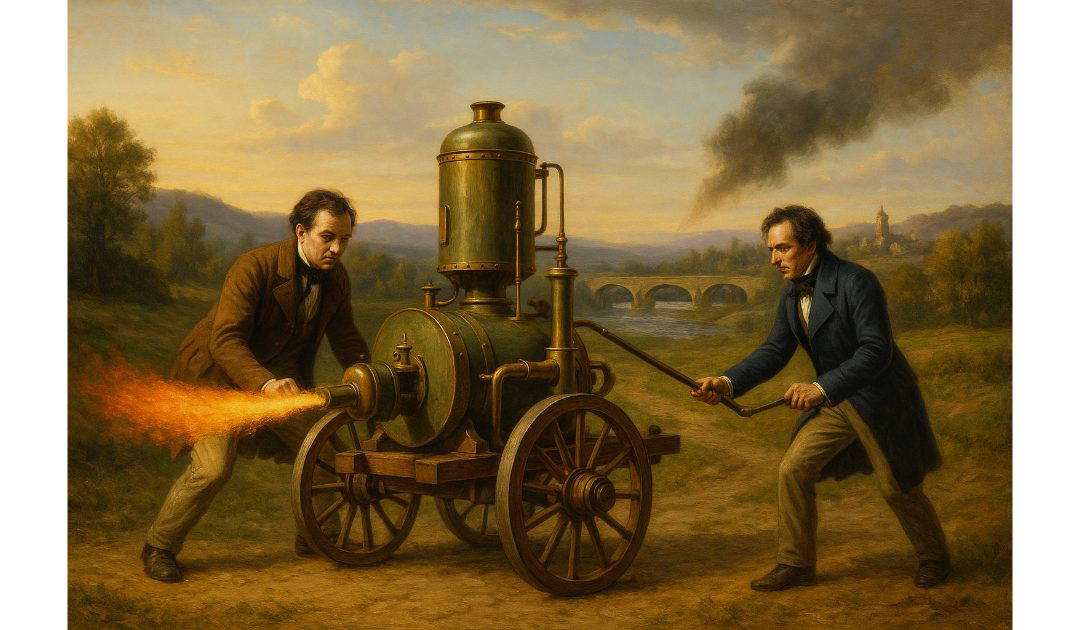Two events caught my attention for today’s post. On the 20th of July in 1903, the Ford Motor Company shipped its first automobile, and in 1807, Napoleon awarded a patent to Nícephore Níepce for his Pyrélophore, the first internal combustion engine. I studied engineeering at the University of Oxford, and I hadn’t heard of Nícephore Níepce or his Pyrélophore before. I learnt about the Nikolaus Otto, the Otto cycle, and the four-stroke engine. I’ve posted about a number of inventors, from Gutenberg to Edison, so let’s look into the history of the internal combustion engine.
Early Concepts and Developments:
The concept of the internal combustion engine dates back to the 17th century, with early theoretical designs focusing on harnessing explosive forces to generate motion. In 1680, Dutch physicist Christiaan Huygens experimented with a rudimentary gunpowder-powered engine, although it was never practically implemented.
19th Century Breakthroughs:
The true evolution of the ICE began in the early 1800s. In 1807, French engineers Nicéphore Niépce and his brother Claude created the “Pyréolophore,” an engine powered by a mixture of lycopodium powder, coal dust, and resin. Around the same period, Swiss engineer François Isaac de Rivaz developed an engine powered by a hydrogen and oxygen mixture.
The most significant advancement came with the invention of the four-stroke engine by German engineer Nikolaus Otto in 1876. Known as the “Otto Cycle,” this engine design became the foundation for most modern internal combustion engines. Otto’s engine was more efficient and practical for widespread use.
The Rise of the Automobile:
Following Otto’s breakthrough, engineers like Gottlieb Daimler and Wilhelm Maybach refined the design, leading to the development of compact, high-speed engines suitable for automobiles. Karl Benz built the first true automobile in 1885, powered by a single-cylinder four-stroke engine.
The Diesel Engine:
In 1897, Rudolf Diesel introduced the diesel engine, which operated on a different principle—compression ignition rather than spark ignition. Diesel engines proved to be more fuel-efficient and robust, making them ideal for heavy machinery, trucks, and ships.
20th Century Innovations:
Throughout the 20th century, internal combustion engines saw numerous enhancements, including the introduction of turbocharging, fuel injection, and emission control technologies. The development of lead-free petrol and catalytic converters in the 1970s addressed environmental concerns.
Modern Developments:
Today, internal combustion engines are highly sophisticated, incorporating advanced materials, electronic management systems, and hybrid technologies. However, with the growing emphasis on sustainability and reduced carbon emissions, ICEs face increasing competition from electric powertrains.
Despite this shift, the internal combustion engine remains a critical component in transportation and industry, showcasing over two centuries of remarkable engineering progress.

